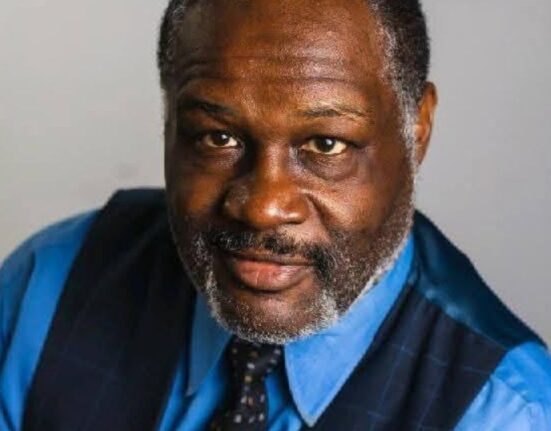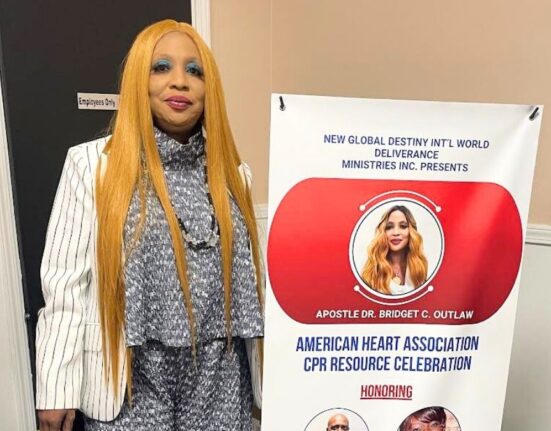There are hundreds of thousands of religious congregations across the United States. Some of the biggest, known as “megachurches,” are facing challenges as the culture around organized religion changes.
Across the nation, there are hundreds of thousands of religious congregations, and as Lisa Desjardins reports, some of the biggest known as megachurches, are facing challenges as the culture around organized religion changes.
Lisa Desjardins:
Woven into the U.S. political conversation is another discussion about religion and its role in the country. A rising force has been megachurches, Christian congregations with 2,000 worshippers or more, while there are fewer than 2,000 of those mega churches, a fraction of churches overall. They are so large that they draw nearly 7 million Americans on average. They grow even as Americans overall become less religious.
Recently, though, megachurches have also been in the spotlight for the resignations of two high profile pastors. To look at this more deeply, I’m joined by Scott Thumma, a professor of sociology of religion at Hartford International University.
Scott first of all, how much have megachurches grown, especially relative to other churches since the pandemic?
Scott Thumma, Professor of Sociology of Religion, Hartford International University: Well, they certainly took a significant hit, probably even more so than other congregations during the pandemic. But, but. But they are very attractional, and consequently, many people flock to them because they had all of the amenities that people were looking for in a congregation.
They had robust Sunday school programs, youth programs and exciting worship. And so consequently they drawn in a lot of folks when other churches haven’t.
Lisa Desjardins:
Now, in terms of what we’ve heard about these two pastors, the two that we’re talking about are Tony Evans, who said he committed a sin, but he didn’t specify what that was, as he resigned. The other is a pastor named Robert Morris. He’s also someone who has worked with former President Trump as an advisor to him, he admitted to sexually abusing a 12-year old in the 1980s when he himself was in his 20s.
Do megachurches have more issues and misconduct than others, or is it just that they’re more high profile?
Scott Thumma:
Well, much of it has to do with the high profile nature of these churches. There have a significant spotlight on them, and consequently, any misconduct or misbehavior gets amplified, in some sense, because of their platform.
We don’t have really good data on congregations and the incidence of misconduct across all congregations, but certainly anything that happens in a megachurch, even to one of the lower level staff, or that someone’s ministry gets amplified because they have such a high profile and in our religious landscape, for sure.
Lisa Desjardins:
And these mega churches are also mega businesses, just by the nature of having so many people attend. What are the challenges and the benefits of dealing with dollars and also trying to deal with the divine?
Scott Thumma:
They really are a kind of corporation scale. The average mega church has well over $5 million annual budgets, and they might have upwards to 100 to 200 staff people. And it takes an exceptional team of people to run those but then also to remain a kind of spiritual reality. And those two don’t always mix.
Consequently, I think in recent years, we’ve seen a lot of megachurches turn to organizations like ECFA, evangelical financial accountability organization, and also putting into practice rules and background checks and all of those kinds of things to really try to professionalize, even more so than most small churches for sure.
Lisa Desjardins:
I know from my experience with megachurches, they really can feel like small communities, small towns in it themselves. Can you talk about how they supervise what they do? They’re not necessarily part of other denominations are kind of sort of their own independent branch of Christianity, perhaps some, each one to itself.
Scott Thumma:
About 40 percent of megachurches are what we call nondenominational. They’re not connected to a national denomination that’s recognized as a religious entity. Consequently, those 40 percent really are autonomous, and they may have some network connections with other churches, but they really are accountable only to themselves.
But a lot of the mega churches, even if they are denominational, because they’re so large compared to the average congregation in the United States, which is about 60 people, it’s difference between a David and a Goliath, right? And that raises a lot of issues around accountability. If something happens is, is the denomination going to come in and say, I’m sorry you need to — you need to make some changes or and if they’re nondenominational, who’s going to do that, the board of the church is oftentimes picked by the pastor of that church and is internal to the congregation, so that makes accountability pretty tough.
Lisa Desjardins:
As you mentioned, these churches have a lot of appeal. They especially have brought in, often a more diverse crowd than we see, especially in other evangelical churches, younger crowds, lots of sort of passionate youth activity.
Now that’s in contrast to the fact, as I mentioned, that Americans overall seem to be shrinking away from organized religion. Why do you think there is that trend in America now?
Scott Thumma:
we’ve seen over the last few decades, actually, even before the rise of the nonaffiliated, a kind of disconnecting from civic organizations, and that has compounded now with younger generations finding other things to do, or finding other ways to be spiritual than belonging to a particular congregation.
And with the average age of the attender rising in most churches, and the negative publicity that a lot of congregations get because of anti-LGBT or women’s issues or other scandals that have happened, all of those things, I think, go against younger generations finding them a sufficient place to go and become spiritual. They would much rather find other ways, whether it be so soul cycle or going hiking in the woods or something.
ReplyForward Add reaction |





